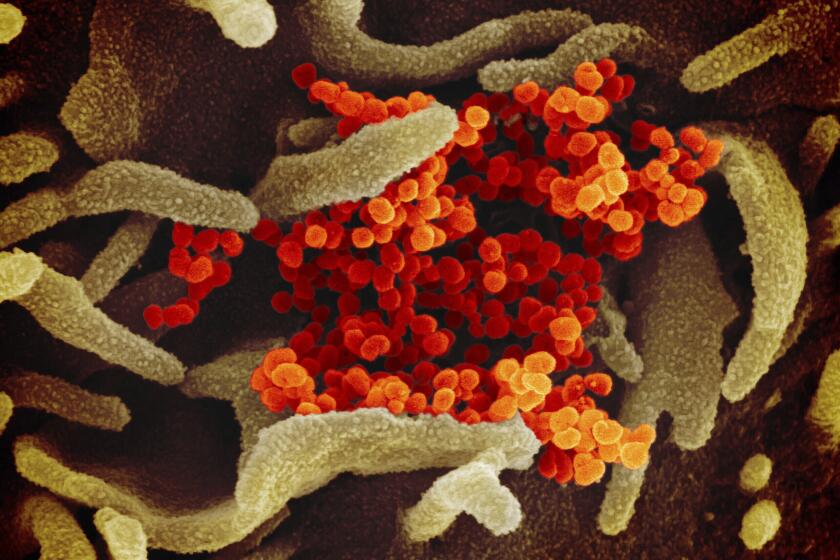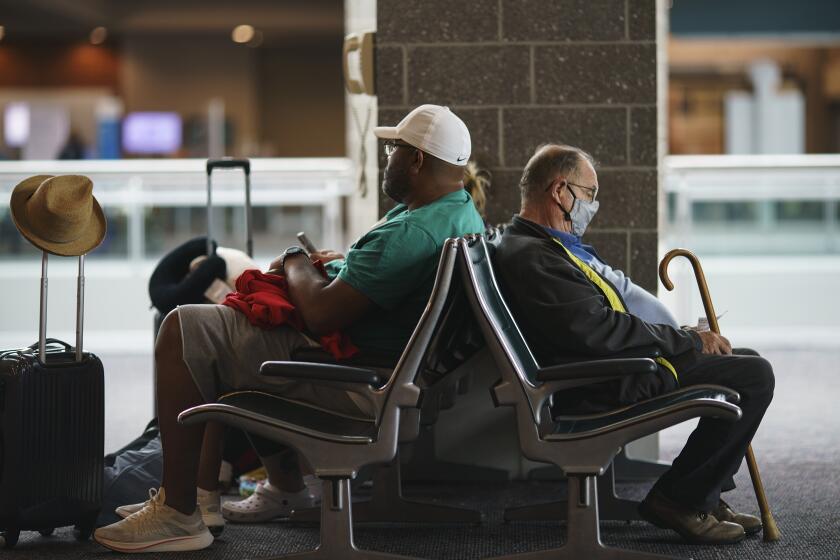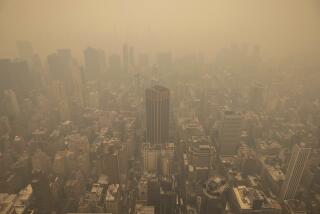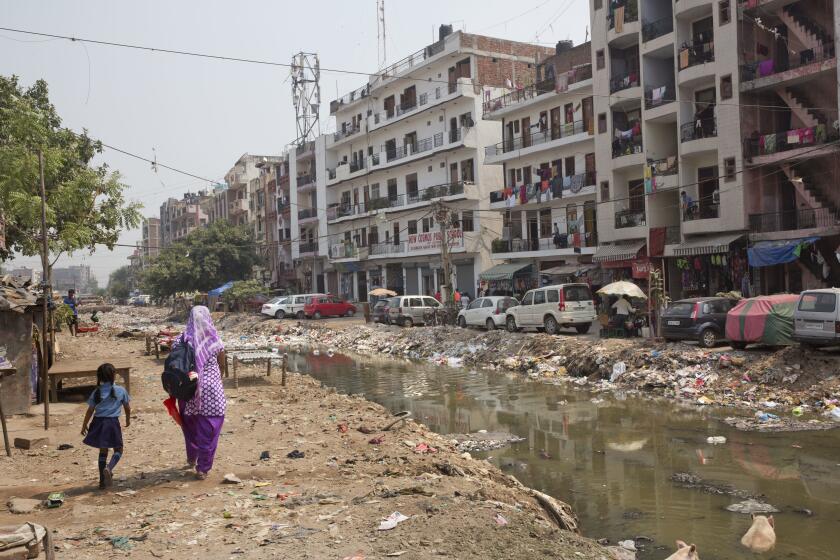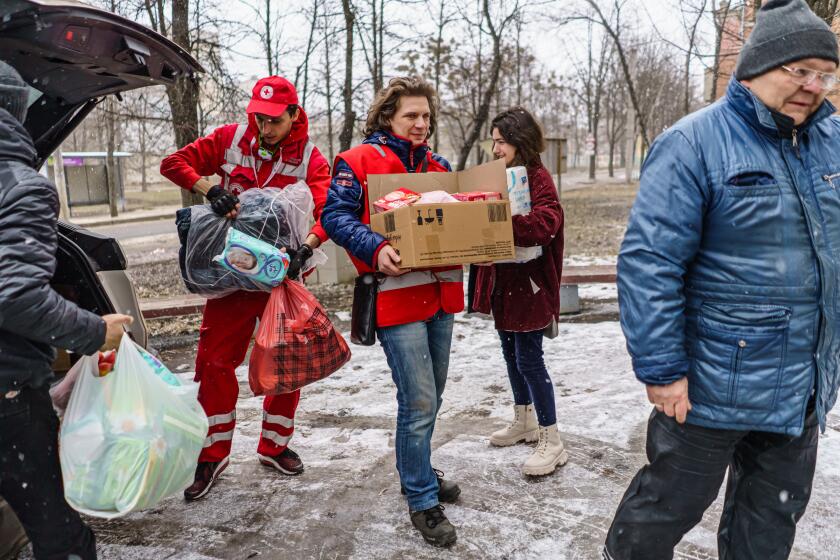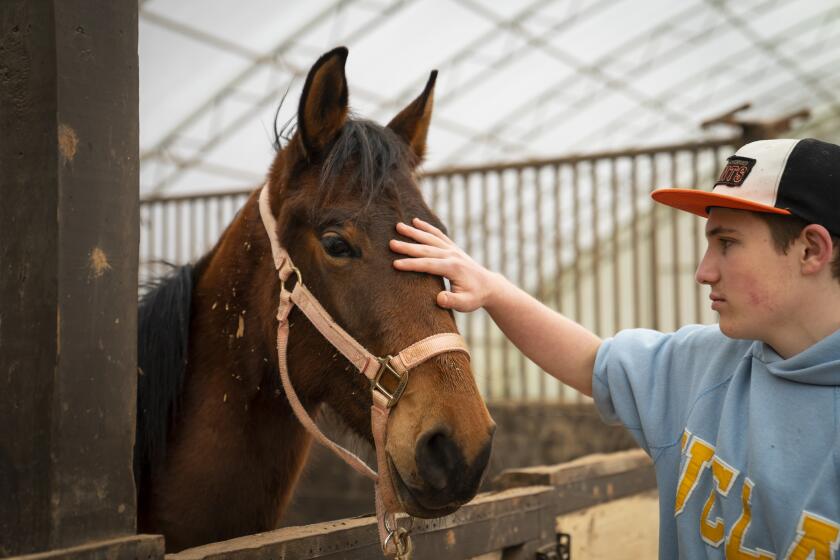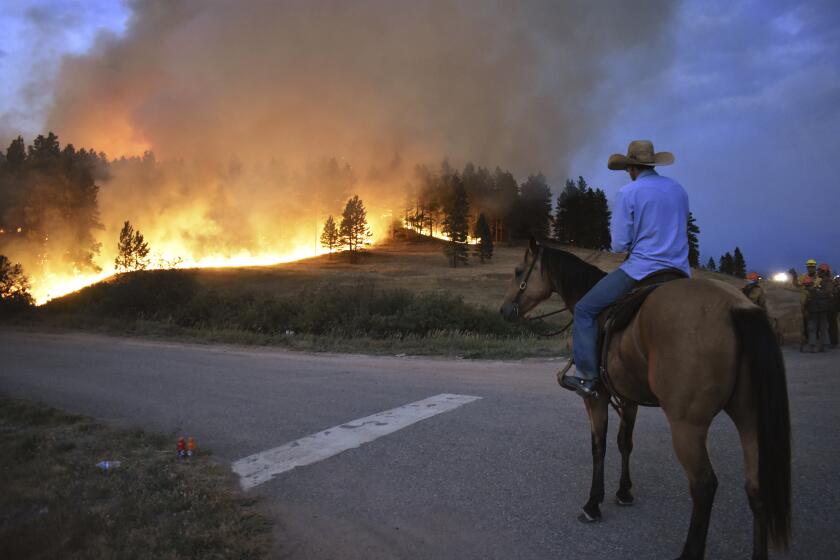Op-Ed: Don’t pretend we’re ‘back to normal.’ Fight for cleaner air to prevent COVID
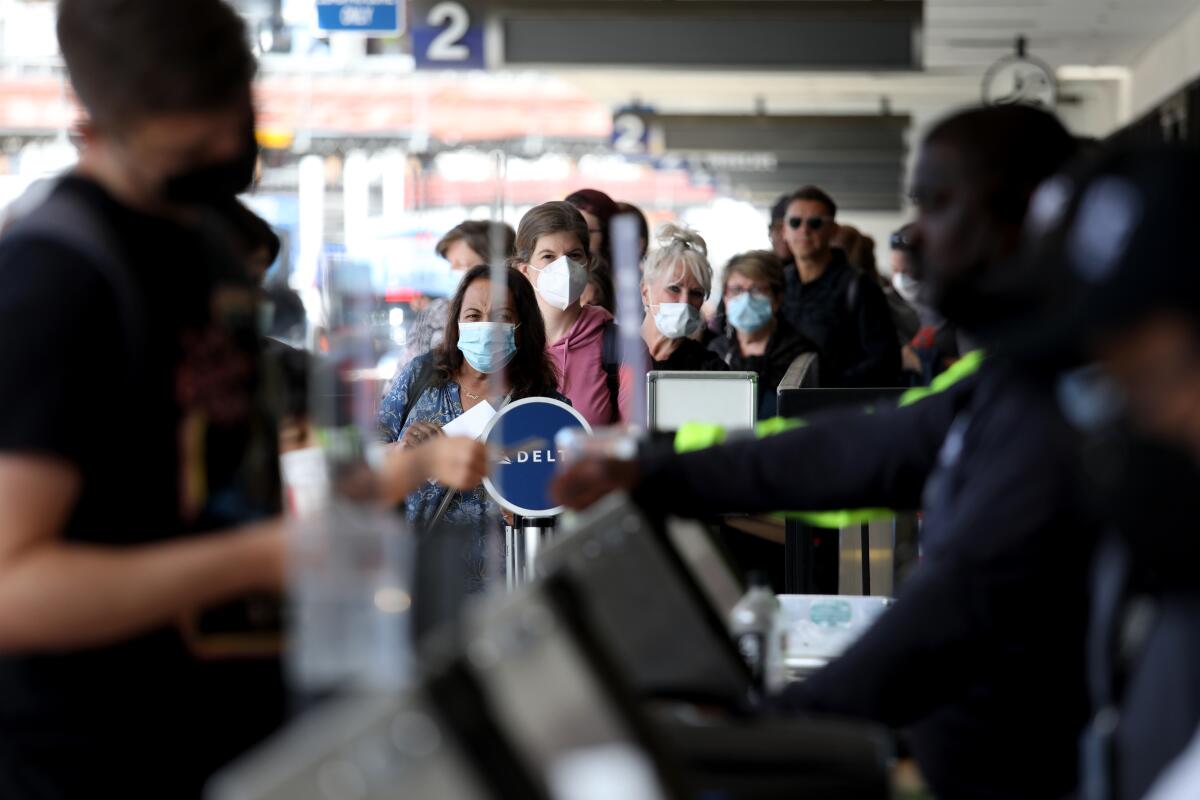
Right now, we are at a manageable point in the COVID-19 pandemic. The rate of new U.S. cases has significantly slowed since the first Omicron surge. Although Omicron’s BA.2 variants have increased cases, particularly in the Northeast, hospitalizations and deaths have declined or leveled off. Vaccination and prior infection by the earlier Omicron surge seem to be protecting most Americans against severe illness.
As a result, some public health pundits are urging Americans to go back to “normal.” But in fact, we should focus broadly on prevention against future variants and airborne illness. Not battling hospital surges right now gives us space to think long-term. This approach is all the more urgent because we cannot rely on individuals to test or isolate constantly and masking is decreasingly enforced, especially since federal officials are battling over the travel mask mandate.
We know future waves will threaten us all again. To prepare, we need to improve ventilation to make environments lower risk for COVID and improve case tracking so we can detect surges early enough to stop them.
The degree of protection against COVID strongly correlates with the strength of our long-lived T-cell response to the coronavirus’ proteins.
Experts have been calling for better ventilation and air filtration standards as far back as early 2020. Superspreading outbreaks — at choirs, weddings, gym classes and restaurants — have made clear that transmission can happen at a distance of more than 6 feet, and infectious particles exhaled by a sick person can hang in the air for more than 15 minutes.
The Centers for Disease Control and Prevention, the World Health Organization and other major agencies acknowledged the role of airborne transmission last year. But in the U.S., we’re not acting sufficiently with that knowledge.
To limit the spread of airborne illness, hospital isolation rooms are required by the CDC to cycle through new air at least 12 times per hour. Given that people are typically most contagious with COVID when still out in the community early during infection, state and federal government should require equally strict filtration standards wherever possible in shared, crowded places.
And the public should be notified of the air quality in buildings and public transit before entering, as well as of its potential health effects such as COVID risk. (Translating air changes per hour and CO2 levels, which reflect crowding and pollutants, into a grading system is one place to start.) Just as restaurants have health inspection reports with letter grades in their windows, shared indoor spaces should display their air quality ratings. These ratings can help people adjust their behavior appropriately: For instance, people may choose to wear high-quality masks to attend an event that is important to them but has poor air quality.
In March, the White House released a plan for cleaning air to reduce COVID spread. But this document lacks specifics around ventilation and filtration and is largely a list of suggestions. While the White House announcement emphasizes that the American Rescue Plan allocates $122 billion for schools and $350 billion for state, local and tribal governments to pursue clean indoor air, it is unclear how recipients will distribute this money in the absence of federal standards.
The CDC’s chief medical officer has advice for travelers looking to stay safe when people around them have ditched their masks.
That puts the onus on states and public health departments to set clear goals and transparently track progress. In California, the public health department recommends four to six air changes per hour (ACH) of air filtration in indoor public spaces with low ventilation. Yet last year, San Francisco’s BART transit system installed virus-trapping filters that replace the air more than 50 times per hour.
The state should eliminate inconsistencies across public spaces and support public health by recommending a minimum of 12 ACH to match the hospital isolation room standard. This level offers proven protection and can be achieved with gold-standard HEPA air purifiers, potentially including low-noise, cost-effective DIY air filtration (made from box fans and HVAC or furnace filters).
Ventilation measures can help minimize further harm to those who have consistently borne the greatest toll of the pandemic: low-income communities and communities of color. Many such families live in crowded, multigenerational households, with family members working front-line jobs that increase their exposure to infection and the likelihood they will transmit the virus to older or other high-risk relatives. They may also lack the space to isolate safely in their homes.
In addition to pandemic basics such as protective masks and rapid tests, the government should provide these households with portable home air purifiers to help reduce household spread if one person gets infected.
The other key step for COVID outbreak prevention is earlier and more accurate case detection than we have now. Rapid at-home test kits have made it harder for state health departments to keep accurate infection counts, since most people aren’t sending their results to labs or the government. And many samples are not sent in for analysis, including genomic sequencing that helps detect new variants.
Scientists and their funders should throw the same effort into fighting the virus’ future as they did in its early days.
Since transmission can grow exponentially, doubling every few days, by the time cases fill up hospitals or urgent care clinics we may well be into our next surge with little time to reverse or contain it. Reinstating prevention measures like masking in public will be too little, too late once another surge begins.
More COVID test options can help, such as the new COVID-19 breathalyzer that hospitals, physicians and test sites can use to quickly alert people who are likely to be infected. In time, these can be used before entry into large events to prevent superspreading. Test results from any source should be linked and sent to public health departments to keep more accurate track of spread. Wastewater detection is another important tool to predict future surges and has already been used effectively in many states. U.S. wastewater data indicate we are detecting 2.7 times fewer cases than are actually in the population.
By focusing on ventilation and testing, states can better prepare for an uncertain COVID future. Pretending the pandemic is behind us doesn’t mean it is. Let’s not become complacent when we need to do the opposite.
Abraar Karan is an infectious disease doctor and researcher at Stanford University. Devabhaktuni Srikrishna is an electrical engineer and the founder of www.patientknowhow.com. Ranu Dhillon is an instructor at Harvard Medical School and a doctor at Brigham and Women’s Hospital.
More to Read
A cure for the common opinion
Get thought-provoking perspectives with our weekly newsletter.
You may occasionally receive promotional content from the Los Angeles Times.
